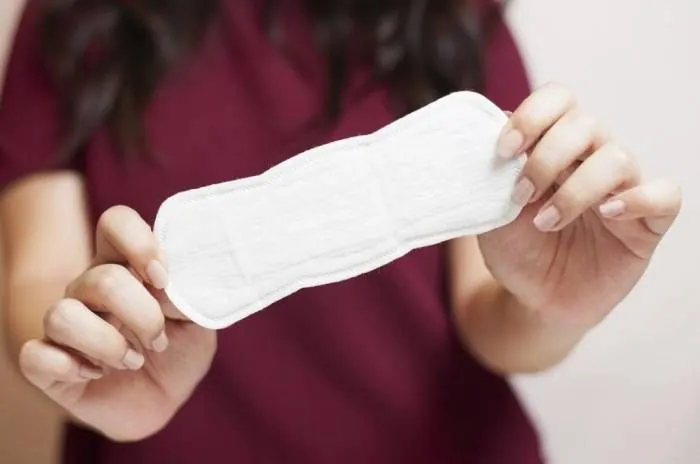Beauty industry and personal care market: whether women are protected from toxic exposure
Kyiv • UNN
A UN expert has found a link between toxic substances in cosmetics and hygiene products and women's diseases. Most manufacturers hide the full composition of products and ignore health risks.

Many diseases of the female genital system can be associated with the toxicity of consumer products, including cosmetics and hygiene products, which are regularly used by women. This is stated in his report by UN independent expert Marcos Orellana, reports UNN.
The expert emphasizes in his new report that health systems are not designed to help people protect their physical and mental health from the negative effects of toxic substances.
The report focuses primarily on the gender aspects of the impact of toxic materials on human health. And it is noted that the conclusions are not comforting: women suffer to a much greater extent than men.
Orellana, who serves as Special Rapporteur on the human rights implications of the management and disposal of hazardous substances and wastes, argues that the production of toxic products for women, such as “scented” pads, may be partly due to sexist stereotypes and gender bias. Yet medicine is primarily male-oriented, and women's illnesses caused by toxic products are not given sufficient attention.
Medicine is male-centered
As the expert emphasizes, medical standards are mainly designed for men. So, in 2020, only one percent of medical research and innovation concerned purely female diseases (except cancer). At the same time, the needs of women in the field of treatment of hormonal disorders, cardiovascular diseases, diseases of the reproductive system and mental disorders differ from the needs of men.
It is noted that health workers are less inclined to believe women and often ignore their complaints. This includes women suffering from diseases caused or aggravated by toxic substances.
Toxic substances and female gynecologic diseases
One chronic gynecological disease that affects millions of women worldwide and is characterized by a complex set of symptoms including pelvic pain, heavy bleeding and infertility is endometriosis. Its incidence is rapidly increasing, and some studies suggest that it may be related to exposure to toxic substances, including dioxins.

Patients with endometriosis are not only forced to endure acute pain, but also face distrust from doctors and often wait a long time for a diagnosis.
It is reported that one of the main causes of infertility among women is polycystic ovary syndrome, which is often attributed to the effects of toxic chemicals on the endocrine system. And the effects of such exposure can be felt for generations. Polycystic ovarian syndrome affects 8 to 13% of women in their reproductive years, and in 70% of cases they are unaware of it.
Another rapidly spreading female disease is uterine fibroid. Research suggests a possible link to phthalates in consumer products, including food packaging.
Toxic substances, menstruation and female genitalia
Women's health, especially reproductive health, can be negatively affected by prejudices related to menstruation, female genitalia and, in general, feminine nature.
Menstruation is often tabooed as a topic. At the same time, female genitals are especially vulnerable to toxic substances, since the skin of the female genital organs has a special absorbency.
It is reported that many manufacturers of such products exploit prejudices about unpleasant vaginal odors during menstruation and under this pretext add harmful chemical flavors to the pads. As another solution to this far-fetched problem, women are also often offered douching, as a result of which the body is exposed to harmful chemicals that make up some douches, including phthalates.
A recent study found lead and arsenic, which are known carcinogens, in women's pads. Another study estimated that an average of 9.4 billion plastic nanoparticles are released from one pad.

The report also notes that some of the new menstrual products, such as special briefs designed for repeated use, may contain PFAS (per- and polyfluoroalkyl substances).
However, the toxicity of menstrual hygiene products is largely invisible, and most Governments have not taken any measures to ensure that consumers can easily obtain information about the composition of the products they use.
Scientists find link between depression and fever22.10.2024, 03:49 • 15747 views
Toxic substances, beauty and advertising
A woman's social status often depends on how attractive, professional and youthful she looks. Therefore, women use various cosmetic products more often than men.
The problem is exacerbated by the lack of proper labeling of cosmetics, including accurate information on their composition, in many cases. For example, an audit of 362 products for triclosan, parabens and other endocrine-disrupting chemicals conducted by organizations in eight Asian countries found that many of them were not fully or accurately labelled, and some contained high levels of hazardous chemicals.
Some hair straightening products still contain formaldehyde, a carcinogenic substance. A large-scale study of such products, used mainly by women of African descent, found an increased risk of uterine cancer associated with them.
A recent study in Trinidad and Tobago tested 19 over-the-counter skin lightening creams and found mercury in 16 of them, with six exceeding the limits set by the parties to the Minamata Convention on Mercury and three reaching critical levels. Mercury ingestion can cause dermatologic problems, nervous disorders and kidney problems.
At the same time, the Special Rapporteur notes, manufacturing companies selectively fund studies that favor them or manipulate data to downplay the risks associated with their products, thereby misleading the public and authorities and discouraging the promotion of safer alternatives.
Recommendations of the Special Rapporteur
Orellana proposes a number of recommendations to the states. In his opinion, they should, in particular, adjust the “norms” of toxicity of consumer goods and the concentration of harmful substances in them, ban the use of certain toxic materials, and better inform the population, including about measures to reduce exposure to toxic substances and their harm, taking into account the gender factor.
Countries can also develop requirements for proper labeling of goods, regulate advertising activities, take measures to familiarize health workers with the negative effects of toxic substances on the human body, fund research on the effects of toxic substances on the health of women and men, and actively consult with women.